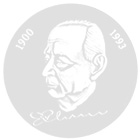Invention and development of chip card technologies
Jürgen Dethloff
for his early work and investions leading up to the development of the modern chip card, in particular for the invention of the microprocessor card.
Roland Moreno
for his important investions and developments facilitating widespread use of the chip card, in particular for the technologies employed in data management, verification of personal identification numbers, and data acces control.
Chip Cards – From Calling Card to the Pocket-Size Computer
A mere three decades ago it did not yet exist. However, the chip card has since enjoyed phenomenal succes especially in Europe and, increasingly, in the United States and Asia. Calling cards, the first large-scale use for the chip card, have become household items. Few people stop to remember that they have only been in widespread use for some twenty years in France and about ten years in Germany. Now we are seeing the first cross-border calling cards. You can buy card a card in one country and use it in others as well. Another important application in the telecommunications is the GSM card which must inserted in to cell phones before use. Ist share of the chip card market is increasing rapidly in line with the current boom in cellular telephone sales.
The chip card is now firmly etablished as part of our culture. An active collectors´ market has developed around attractively designed limited-edition calling cards. These cards often trade for many times their nominal value and have becom elike postage stamps in that they are bougtht and sold as collectors´ item in addition to their original function
Quite apart from ist fuction as an object of desire for collectors, the chip card is a major economic factor. The semiconductor components used to manufacture chip cards already account for more than 200 million dollars in European sales alone. It is expected that the market volume for the tiny card chips will reach 1750 million dollars by the turn for the century, which will break down equally among Europe, the United States and Asia.
Progress in chip card technology is driven by varity of applications. In Europe, the leading application is still telecommunications, but in the United States new uses are primarly coming from the financial sector. Credit card organizations are replacing the old magnetic card with the chip card because the latter offers them much higher security at reasonable cost. Monetary transactions are the driving force behind many other uses: the world first “electronic purse” using a chip card was realized in Denmark, and the Austrians were the first to introduce a Eurocheque card with a chip.
The health industry, of course, is another important segment. More than 50 million chip cards issued by German insures for identification of polyholders have greatly simplified accouting procedures for physicians and insurance companies. But there is more to come especially in the health maintenace area, for high level of security implemented in modern chip cards makes it a viable option to store essential information for emergency medical preocedure on the card while preserving confidentialy. Such a “patient data” card is already being used in the Netherlans. Already, the health industry ranks third among chip card market segments.
In transportation, the chip card enjoys broad appeal for different reasons. For example Duetsch Lufthansa is offering a “Senator Card” to passengers so that the can book their fligths and reserve their favorite seats simply by walking up to the gate. The card features non-contact technology, which means that it does not have to be inserted into a reading slot, and it conbines the two functions of payment and booking.
Filds tests currently being conducted in several cities are deigned to investigate the card´s utility for public transportation. Unlike the traditional ticket, the chip card provides an excellent opportunity for precisely calculation the fare in accordance with the actually used service, thus making more attractice proposition to use subways, commuter trains, streetcars and omnibuses.
A special type of chip card is making the idea of the “pocket-size computer” com true. This requires th capabilty to store large quantities of data, which the user needs for his daily work routine, on a chip card. Today´s notebook-size computer will effectively schrinl to calling card size. In order to access this data, all that is needed is a user-interface unit providing a keybord, a screen, a processor and a power unit in addition to a slot for insertion of the personal card containing the user´s own data.
None of these concepts would have been possible without the introduction of common formats for size and access, which were required in order to etablish global standards. A distictive advantage of the chip card is its inherent security. The advocates of data privacy have long been warning the public of the consequences of storing large quantities of personal data in central database. The chip card now offers the opportunity to store such data on one´s personal chip card. Acces to these data is then granted only to those who need it in order to perfrom certain tasks, and only to the extent required.
The EDUARD RHEIN FOUNDATION is honoring two European inventors in 1996 who have earned worldwide recognition as trailblazers for chip card. As a not for-profit entity, the Foundation does not evaluate intellectual property, priority in publication, or market shaes; rather, the foundation is paying tribute to the lifes´s work of two men who, each in his own way, have made substantial contributions to the success of this new medium.
Dipl.-Ing. Klaus H. Knapp
EDUARD RHEIN FOUNDATION
